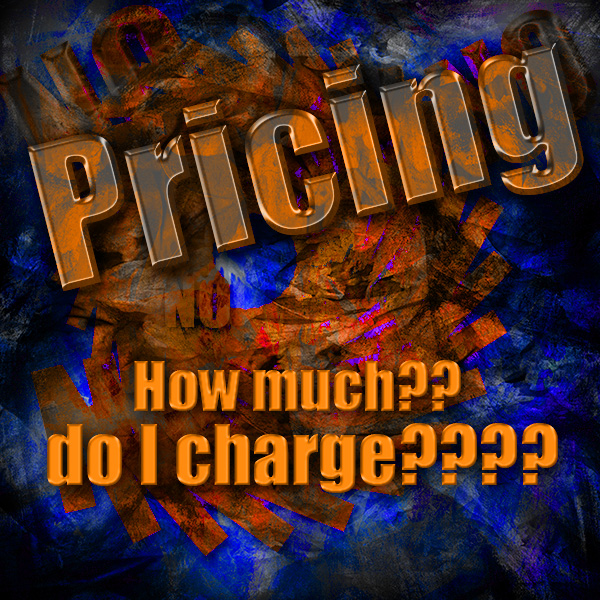
by successfulbob | Guest Post, Marketing Monday, photography
Portrait Pricing Guidelines – Marketing Monday
with Steve Bedell
This article is from EPhoto Newsletter, a free bi-weekly newsletter for professional photographers. To subscribe for more great info contact Steve at [email protected].
Pricing
If you’re like me, you belong to more than a couple of Facebook photography groups. At the end I’ll even list some that I feel are the most valuable.
Reading the posts in these groups is both an education and a frustration. The same questions posted over and over, and then 68 responses from people who may or may not be qualified, but they’re going to chime in anyway.
With that in mind, that brings us to part one: what should your prices be?
I find it hard to believe that people just go on these groups and ask prices like, ‘Hey, how much should I be charging for an 8×10?’ More surprisingly, people will answer something like ‘I charge $45’ or ‘I charge $195’. Wrong answer.
But perhaps my favorite is ‘First, you need to figure your Cost of Doing Business (CODB).’ It used to be that no one took the time to do a few tedious calculations to figure that out and while I can applaud the fact that more people are aware that you actually have to have some kind of idea of what your numbers need to be?
I find it hard to believe that people just go on these groups and ask prices like, ‘Hey, how much should I be charging for an 8×10?’ More surprisingly, people will answer something like ‘I charge $45’ or ‘I charge $195’. Wrong answer.
But perhaps my favorite is ‘First, you need to figure your Cost of Doing Business (CODB).’ It used to be that no one took the time to do a few tedious calculations to figure that out and while I can applaud the fact that more people are aware that you actually have to have some kind of idea of what your numbers need to be in order for you to generate the income you desire, that is NOT the FIRST question you should be asking yourself.

Mistake one: The first question should be ‘Where do I want to position myself in the market?’
You see, all that other stuff is fine but how can you set prices until you define your market and your brand. Do you want to sell unique 30×40 painted portraits for $20,000? Do you want to do school photos for $25 a unit? Do you want to sell prints or files or both? Are you seeing why it makes no sense to figure out COGS and CODB until you define your niche in the market?
You see, all that other stuff is fine but how can you set prices until you define your market and your brand. Do you want to sell unique 30×40 painted portraits for $20,000? Do you want to do school photos for $25 a unit? Do you want to sell prints or files or both? Are you seeing why it makes no sense to figure out COGS and CODB until you define your niche in the market?
With that taken care of, let’s go ahead and address some other pricing issues that make my head boil every time I see them.
Mistake number 2: Starting out at a low price to get business and raising it later.
Big mistake. Later won’t ever come unless you move to another city and start with new clients because you’ve already branded yourself at a certain price level. Work for FREE until you feel your work commands the price you want and then start charging. It’s far harder to dig out of a hole than to start out where you want to be. If you need to do another job or earn income some other way, do it.
Mistake number 3: Selling files, or selling files and prints.
OK, I expect some will disagree with me here but hear me out. I know MANY successful photographers who make a great living selling wall prints and other print products. While there are probably some, I don’t know any who make a great living selling files.
Here is the part I don’t understand. If we sell artwork, we can command a decent price for it. And we can sell many copies of it. I had a client a couple of years ago for an extended family portrait session. She bought $4500 worth of 5×7’s! And I ran into her at the beach one night while I was doing a family portrait and she was there with some family members in beach clothes and she asked if I could take photos of them when I was done with my family. I said sure. She ordered another $2200 worth of 5×7’s from those super casual beach photos!
That’s almost $7000 worth of 5×7’s from 2 files. Imagine if I sold that file for $300. I’d have $600 instead of $6700. How much more work would I have to do to sell files to make that amount? What if I gave them the file with each print they ordered, like some photographers do? I’d still be WAY under!
More from Steve next Monday!
Steve Bedell has been a professional photographer for over 35 years. He has done weddings, portrait and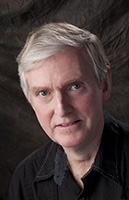 commercial work but now restricts his business to portraits only.
Steve holds the Master of Photography and Photographic Craftsman degrees from the Professional Photographers of America and is a PPA Approved Print Juror.
commercial work but now restricts his business to portraits only.
Steve holds the Master of Photography and Photographic Craftsman degrees from the Professional Photographers of America and is a PPA Approved Print Juror.
He has been named the New Hampshire Photographer of the Year a record 8 times and in 2011 was awarded the New England Photographer of the Year title. His specialty is natural light portraiture.
He has written hundreds of articles for photo publications, taught classes and workshops nationwide and produced several lighting DVDs. His private newsletter, EPhoto, reaches over 2000 photographers. Steve was a regular contributor to Shutterbug magazine.
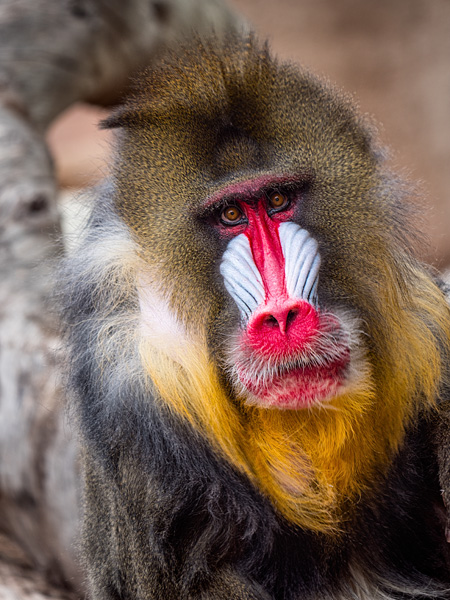
by successfulbob | inspiration, photo walkabout, wildlife photography
Creating Good Animal Photos from a Captive Environment
I practice my wildlife photography by spending time at the zoo. There are a few reasons for this, and I’ll share them here to hopefully help you in your image creation and get feedback from you on my thoughts. You can always reach me through my email [email protected]
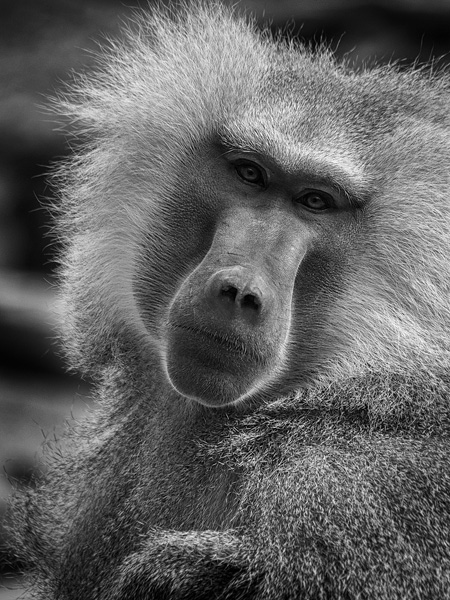 A baboon named One at the Phoenix Zoo. I spent a bit over an hour waiting to get this portrait with eye contact in decent light. Black and white allow for concentration on his expression.
A baboon named One at the Phoenix Zoo. I spent a bit over an hour waiting to get this portrait with eye contact in decent light. Black and white allow for concentration on his expression.
One benefit of photographing in a structured environment is that you can find animals. I know that it sounds simple at its most basic but you need the practice to become a good wildlife photographer. Exercise may be had at the zoo. Part of the training is to learn to focus quickly and in the right place. You may think this can be easy, but until you have tried it, I think you’ll be surprised how difficult it can be to acquire arresting and exciting photos.
 This Mandrill was sleeping for quite a while, but I hung around until he started foraging around in his enclosure. Expression and eye contact are paramount in making this a success. (the color of his features don’t hurt either!)
This Mandrill was sleeping for quite a while, but I hung around until he started foraging around in his enclosure. Expression and eye contact are paramount in making this a success. (the color of his features don’t hurt either!)
Just because the animals are captive does not mean that they will pose for you. Things such as eye contact and behavior can make or break an image. One of the items on which you are practicing is to see how an animal moves. How to stop that movement (or accentuate it for something more artistic).
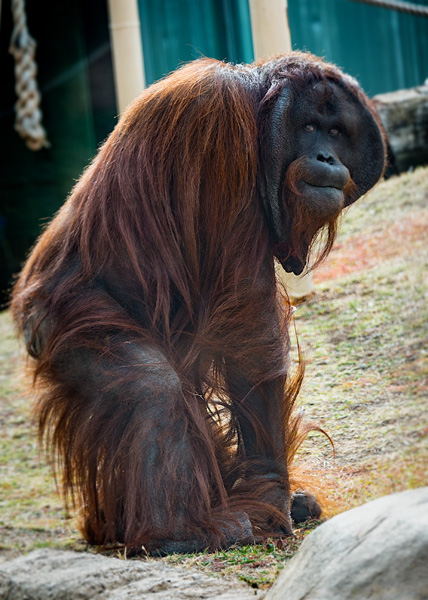 This Orangutan was walking away, and I mentally willed her to look at me over her shoulder. I will often ask mentally for my wildlife to change position and it’s pretty cool how often it works.
This Orangutan was walking away, and I mentally willed her to look at me over her shoulder. I will often ask mentally for my wildlife to change position and it’s pretty cool how often it works.
If I can suggest one thing that you will learn that you can take with you into nature is patience. Even though you are in a target rich area, you still need to spend time, and lots of it, to get images with eye contact. If you run from enclosure to enclosure thinking you will get more varied photos you will be correct. But I suggest that the pictures will be less than stellar than if you spend more time with fewer animals.
More from the Phoenix Zoo in the next couple of days. Including the gear I use for making my images.
Yours in Creative Photography, Bob
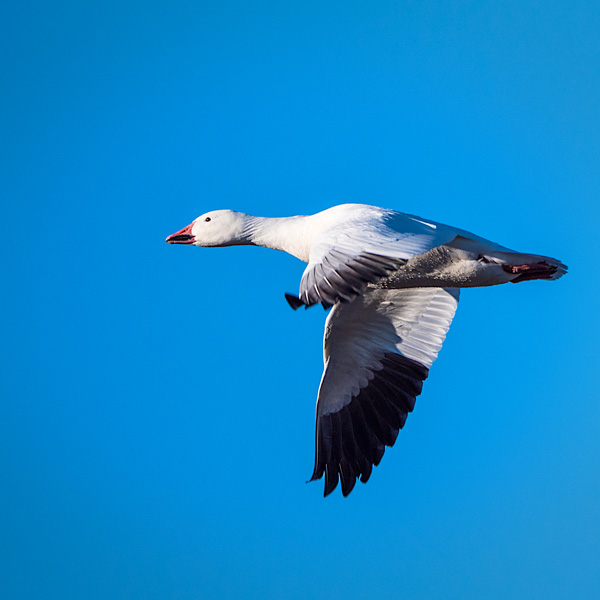
by successfulbob | photography software
It’s Deal Time with Luminar Software
If you haven’t given Skylum’s Luminar a chance as yet it might be time. It sells for $69 (or if you use coupon code COATES $59) It works as a stand-alone program or as a plug-in on MAC and PCs. This software can be a great time-saver and/or artistic tool. Lot of goods stuff including… Ah, I don’t need to ‘splain it to you. Check out the link it’s all there and worth a look!
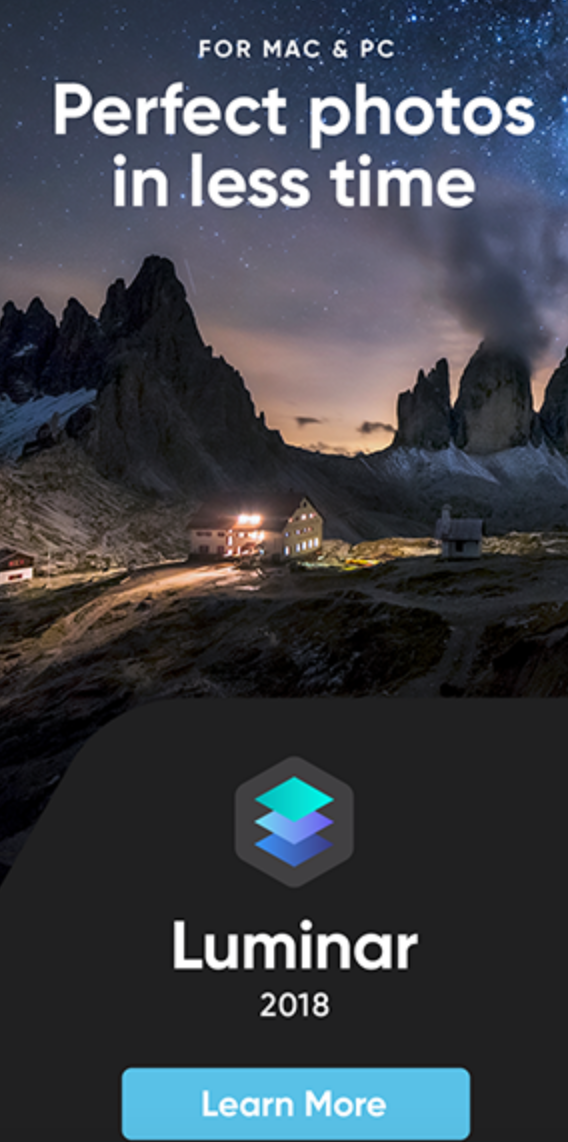 Click here or the image above
Click here or the image above
Happy Thanksgiving!
Yours in Creative Photography, Bob
PS – This Black Friday deal comes with other goodies too!

by successfulbob | commercial photography, Lumix G9, photography, photography creativity, photography education, photography gear, photography lighting resources
Java Presse – Coffee Shoot
The Genesis of a Commercial Shoot
Not quite ‘nectar of the gods’ but I’ve found some serious joy in my morning coffee. It was a gradual process to see the pleasure I now have in the morning ritual and enjoyment of grinding beans, brewing and enjoying coffee.
 Java Presse Coffee image square format final crop
Java Presse Coffee image square format final crop
It started with some friends showing the benefits of grinding beans for French Press coffee. Good stuff.
I found myself getting frustrated with the ‘static cling’ that was generated by using an electric grinder that had a plastic bin for catching the grounds and left little trails of tiny grounds scattered along the counter. This led to looking for a mill that had a stainless steel basket. Research showed that prices were more than I wanted to pay. Which turned out to be a good thing! Because that led me to the stainless steel coffee grinder from Java Presse.
The grinder led me to lots more information about the whole process of roasting coffee, the freshness of the beans and proper preparation for the French Press that I use. Thanks to Java Presse the entire experience has turned my morning coffee into an enjoyable ritual. And who knew that freshly roasted beans, ground fresh just before brewing could make such a difference.
I’m a coffee convert.
Photography Process
And, now on the photography section of the making of a commercial image of the product. You can see the final photo at the top of the post above. Below is how the photo was built.
Good, solid commercial images should look effortless and clean. It takes a bit more to achieve the look. I make this happen by creating several images with different lighting patterns which are later combined in Adobe Photoshop. This comes in handy for items that have different levels of reflectance such as the stainless steel of the grinder and coffee storage container as well as making sure logos are readable.
 Note the harsh light patterns in the metal especially the one crossing through the logo on the grinder
Note the harsh light patterns in the metal especially the one crossing through the logo on the grinder
 Using a reflector I reshot the scene to give more pleasing light on the stainless steel, but now the reflections that give the image life are gone
Using a reflector I reshot the scene to give more pleasing light on the stainless steel, but now the reflections that give the image life are gone
 See the difference between the two blended images. Logos are a much easier read, and there are highlights right where they are needed without distraction
See the difference between the two blended images. Logos are a much easier read, and there are highlights right where they are needed without distraction
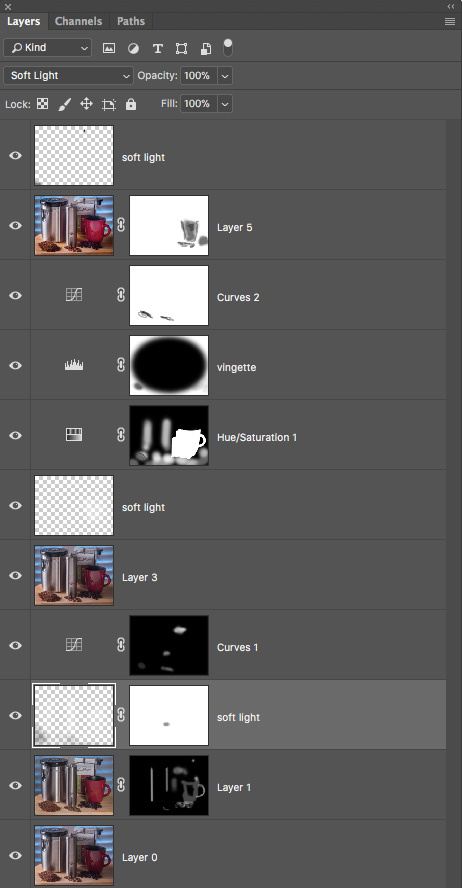 Photoshop Layers Palette is showing some of the work with Masks used to help create the final image.
Photoshop Layers Palette is showing some of the work with Masks used to help create the final image.
I also used Skylum software (formerly MacPhun) software called Focus CK. CK stands for Creative Kit. It is a very handy sharpening and blurring tool for directing attention where you want. I often use the ‘Macro’ setting on its layer and mask in what I need.
Yours in Creative Photography, Bob
PS – Here’s the gear I used in this shoot.
2 Fiilex LED lights with softboxes
Lumix G9
LUMIX G X VARIO LENS, 35-100MM, F2.8 ASPH
White foam core panel
Posing table
Tripod Necessary for keeping images in registration for compositing the lighting
Ball head for tripod – Siri Model K-20X
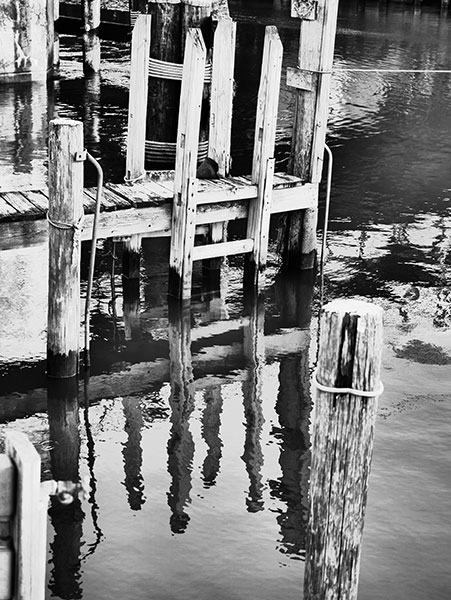
by successfulbob | Guest Post, marketing, Marketing Monday, photography, photography marketing
Waiting for Your Ship to Come In
Marketing Monday with Skip Cohen
I’ve used this quote by Ross Perot in other posts, because it’s so relevant.
“Most people give up just when they’re about to achieve success. They quit on the one-yard line. They give up at the last minute of the game, one foot from a winning touchdown.
If I ask a group of photographers about advertising, somebody will always say, “We tried it once, but it didn’t work!” Ask some people about trying some different lenses or shooting wide open for a different look and you’ll hear almost the same, “I’ve tried it, but my clients like the look I have!” Ask them to move the lights in the studio, the ones that are put in the same spot every day on the masking tape on the floor, and you’ll get almost the same response.
 Empty Dock just waiting for a ship…. or a boat – © Bob Coates
Empty Dock just waiting for a ship…. or a boat – © Bob Coates
Well, what if those photographers are all standing on Ross Perot’s one yard line? What if they just needed to run that ad a few more times for people to contact them? What if they only needed a little more patience?
Trust me, I know it’s tough waiting for your ship to come in. But I’ve seen so many photographers who were able to stay focused, stay aggressive in their marketing efforts and believe in themselves and things did come together.
It’s all about taking action, being patient and not giving up. And since Ross Perot put me on the one yard line, might as well stay with a football theme and give Vince Lombardi the spotlight:
“It’s easy to have faith in yourself and have discipline when you’re a winner, when you’re number one. What you’ve got to have is faith and discipline when you’re not yet a winner!”
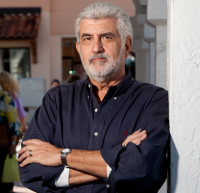
Skip Cohen has been involved in the photographic industry his entire career and previously served as President of Rangefinder/WPPI and earlier, Hasselblad USA. He founded SkipCohenUniversity.com in 2013. Skip is a co-host for “Mind Your Own Business” and “Beyond Technique,” webcasts through Photofocus.com, writes for several publications including Shutter Magazine and is actively involved in several advisory boards for non-profit organizations.

 commercial work but now restricts his business to portraits only.
Steve holds the Master of Photography and Photographic Craftsman degrees from the Professional Photographers of America and is a PPA Approved Print Juror.
commercial work but now restricts his business to portraits only.
Steve holds the Master of Photography and Photographic Craftsman degrees from the Professional Photographers of America and is a PPA Approved Print Juror.
















